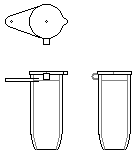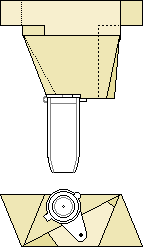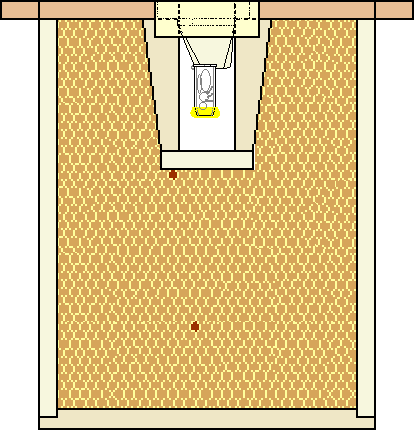II Methods
Normal Introduction
Cassette Frame
|
|
|---|
|
II Methods Normal Introduction Cassette Frame |
The Re-Introduction of Instrumentally Inseminated Queens |
|---|
Re-Introduction of inseminated queen honey bees requires a small amount of isolation to ensure full success, this method is neat and can be calibrated for different release times.
Having Inseminated the virgin we need to put her back in her nuc to "mature" into a laying queen. If we just "bung her in" there is a strong risk of the bees rejecting her, because she has been aneasthetised and may also carry strange scents... We need a method that allows for separation for a short time, but still allowing and maintaining contact or communication between the worker bees and the newly inseminated queen. We also need to obstuct the freshly inseminated queen from making any additional mating flights that could obscure our results.
The method I describe here is only one of many, but it does give a variable timed release that is able to be calibrated.
| This method relies on a commercially obtained "Virgin Introduction Cell" (VIC)... Shown at right, these are intended to be used to introduce virgins that have emerged in an incubator to a nuc for mating. In their originally intended use the queen is confined by a small pad of foundation that is moulded by the fingers to envelope the open end. A pin prick in this wax membrane provides a starting point for the bees to chew away and release the virgin. I have also used a narrow strip of foundation (5 mm wide) placed centrally over the open end, held in place with sticky tape. |

|
|---|
This re-introduction method allows full communication throughout the release process... First we prepare the mouths of the VICs by dipping several times into molten beeswax to build up a rim (this also reduces the diameter inside the open end) to obtain a calibrateable release time this inner diameter is reamed using a twist drill (the smaller the hole... The longer the release time... The timing is also altered by the dipping depth). Because the mouth of the cell is not closed there is tongue and antennae contact whilst the bees chew away the wax rim to allow the escape of the inseminated queen. I have not done any experiments on various sizes of boring.
I personally like to keep the rim short, but thickened so that the initial hole is about 4 mm.
| This is the wooden block (at right) with plastic cell that will fit into the Cell Space situated in one of the nucleus frames that I use. |

| |
|---|---|---|
|
|
Our freshly inseminated queen can emerge easily as a large force of worker bees can release her... Conditions in the centre of the nest should be ideal for maximum dispersal of the still weak queen pheromone to "calm" the workers. I am working on a cassette version of frame that is of box form with single sided comb which has queen excluder as it's front face so that several queens may be inseminated and then placed in individual cassettes within the same 'half width' nucleus box. On emergence each queen would be confined to it's own cassette, but the workers could come and go at will. With many queens in the same box it would be wise for them to be all from the same mother to avoid the workers favouring one more than another, or more importantly... Not looking after the queen at all. This cassette method also provides automatic queen banking and is economical in terms of bee resources. Each individual cassette provides laying space for the queen and a certain amount of assessment can be made of the queens laying ability. Batches of queens can be easily transported over short or long distances. |

|
|---|
If queens are not retained in a cassette frame the entrance of the nuc that she is re-introduced to should have its entrance protected with a piece of queen excluder, in case the queen has a desire to fly and mate in addition to the artificial mating she has undergone.
Printed from Dave Cushman's website Live CD version
Originated... 04 July 2000, Revised... 18 January 2003, Upgraded... 21 January 2005, Further Upgraded... 13 September 2007,
|